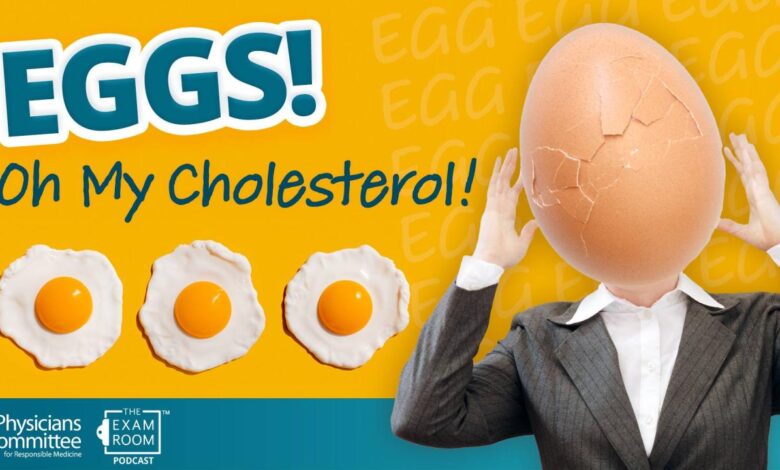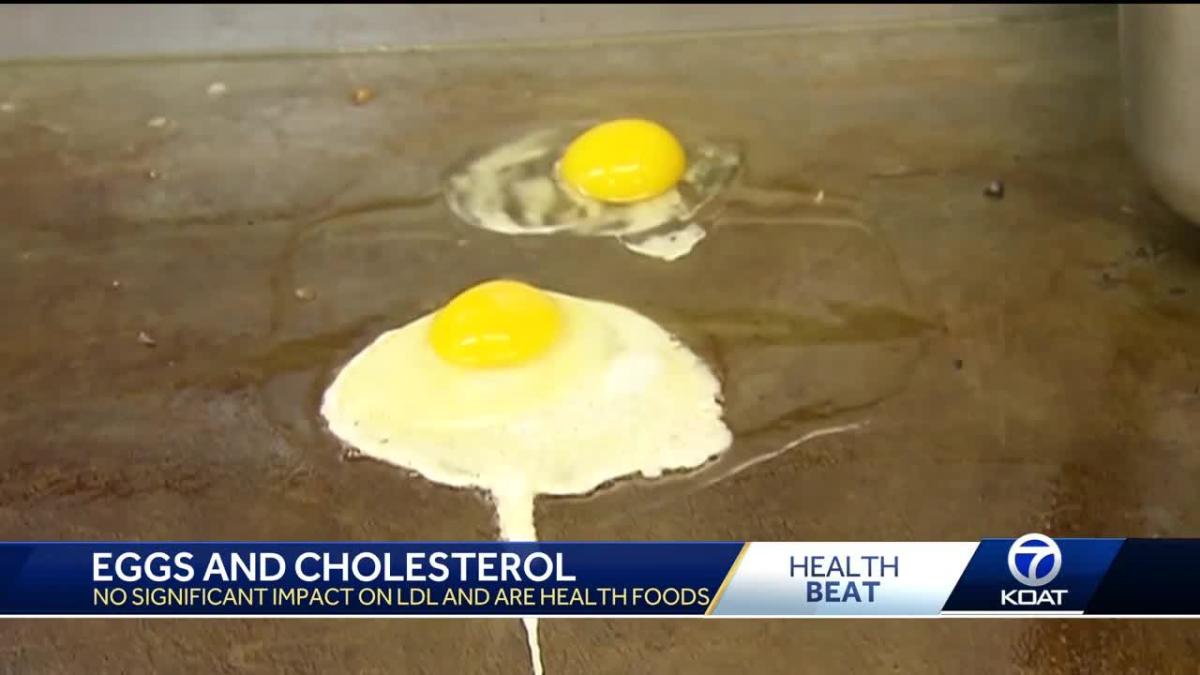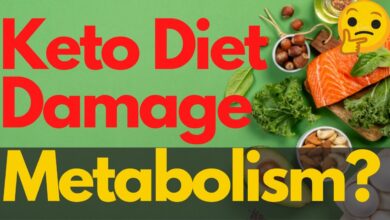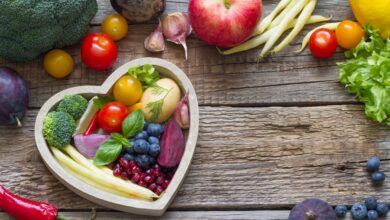
Low cholesterol egg preparation offers a delicious way to enjoy eggs while managing your cholesterol levels. This guide explores various methods for preparing eggs, highlighting healthy ingredients and recipes to make them a part of a heart-healthy diet. We’ll delve into the nutritional profile of eggs, discuss the impact of different cooking methods on cholesterol content, and provide practical tips for preparing low-cholesterol egg dishes at home.
From simple boiled eggs to more elaborate dishes, you’ll discover a wealth of healthy options.
We’ll cover everything from choosing the freshest eggs to minimizing added fats during preparation. Expect a comprehensive look at ingredients, cooking methods, and delicious recipes. This exploration will empower you to make informed choices and create nutritious, satisfying meals that support your cholesterol management goals.
Introduction to Low Cholesterol Egg Preparation
Eggs are a nutritional powerhouse, packed with protein, vitamins, and minerals. However, the cholesterol content of eggs has historically raised concerns for those managing their cholesterol levels. Fortunately, you can enjoy the benefits of eggs while maintaining a healthy cholesterol profile by focusing on preparation methods and smart dietary choices. This approach allows for a delicious and nutritious addition to a low-cholesterol diet.A low-cholesterol diet doesn’t mean eliminating eggs entirely.
It means making informed choices about how you prepare and incorporate them into your meals. By understanding the nutritional profile of eggs and adopting healthier preparation methods, you can enjoy the health benefits of eggs while keeping your cholesterol in check. This guide provides practical strategies for preparing eggs in a way that supports a healthy heart and a balanced diet.
Nutritional Profile of Eggs and Cholesterol Impact
Eggs are a complete protein source, containing all essential amino acids. They are also a good source of vitamins (like B vitamins and vitamin D) and minerals (like iron and selenium). However, eggs do contain cholesterol. The impact of dietary cholesterol on blood cholesterol levels varies significantly between individuals. Some people are more sensitive to dietary cholesterol than others.
This means that a low-cholesterol diet is crucial to managing your overall health, and eggs can be a part of this approach.
While eggs contain cholesterol, the amount of cholesterol absorbed into the bloodstream is not always a direct result of the cholesterol content in the egg. Factors like the overall diet, individual metabolic responses, and the presence of other nutrients in the meal influence the effect on cholesterol levels.
Different Ways to Incorporate Eggs into a Low-Cholesterol Diet
Eggs can be incorporated into a variety of low-cholesterol meals, adding protein and flavor without significantly impacting cholesterol levels. Consider these approaches:
- Choose lean protein sources in combination with eggs. Pair eggs with vegetables, fruits, and whole grains to create a balanced meal that promotes satiety and reduces the likelihood of overconsumption of unhealthy fats.
- Limit the use of high-fat ingredients during egg preparation. Opt for cooking methods that minimize the use of butter, oil, or cream. Grilling, baking, and steaming are excellent alternatives to frying.
- Include fiber-rich foods with your egg meals. Fiber can help regulate cholesterol absorption and promote overall digestive health. Pairing eggs with fruits, vegetables, and whole grains provides these benefits.
Types of Low-Cholesterol Egg Dishes
A wide variety of low-cholesterol egg dishes are available. These dishes emphasize fresh, natural ingredients and cooking methods that limit added fats.
Finding ways to enjoy eggs without the cholesterol worries is a constant quest for healthier eating. Poached eggs are a great low-cholesterol option, and there are so many ways to prepare them, but have you considered the implications of personal choices related to end-of-life care, such as death with dignity laws in the Trump era? death with dignity laws in trump era.
Ultimately, focusing on delicious, healthy egg preparations like these is still a great way to prioritize good health and well-being.
- Scrambled eggs with vegetables: A classic breakfast or lunch option. Adding spinach, mushrooms, bell peppers, and onions provides added nutrients and fiber.
- Poached eggs over a bed of mixed greens: A light and healthy meal featuring eggs cooked gently in water.
- Baked eggs with whole-wheat toast and fruit: A protein-packed meal combining baked eggs with whole-grain bread and healthy fruits.
Comparison of Egg Preparation Methods
The cooking method can affect the nutritional value and fat content of your egg dish. Consider the following comparison:
| Preparation Method | Description | Fat Content (Approximate) |
|---|---|---|
| Boiled | Eggs cooked in boiling water. | Low |
| Scrambled | Eggs whisked together and cooked in a pan. | Moderate (can be high if butter or oil is used.) |
| Poached | Eggs cooked gently in simmering water. | Low |
| Fried | Eggs cooked in a pan with oil or butter. | High (depends on the amount of oil used) |
Egg Preparation Methods for Low Cholesterol
Eggs are a nutritional powerhouse, but the cholesterol content can be a concern for some. Fortunately, numerous preparation methods exist that minimize cholesterol impact while maximizing nutritional value. Smart choices in cooking methods and ingredients can significantly reduce the perceived cholesterol risk associated with eggs.Careful consideration of cooking methods and the addition of specific ingredients can dramatically impact the cholesterol profile of egg dishes.
This section explores various techniques for preparing eggs to optimize health benefits while keeping cholesterol in check.
Egg Preparation Methods and Their Impact
Different cooking methods affect the cholesterol content and overall nutritional value of eggs. Choosing the right method is crucial for a healthy approach to egg consumption.
| Preparation Method | Ingredients | Steps | Impact on Cholesterol |
|---|---|---|---|
| Scrambled Eggs (Low-Fat) | 2 eggs, 1 tbsp. low-fat milk or water, salt, pepper, optional: chopped vegetables | Whisk eggs with milk/water. Heat a non-stick pan over medium heat with a little cooking spray. Pour in egg mixture and cook, stirring occasionally, until set. Season with salt and pepper. | Moderately low. Using low-fat milk/water and avoiding excessive butter or oil reduces cholesterol impact. |
| Poached Eggs | 2 eggs, 1 tbsp. water or vinegar, salt, pepper | Bring water or vinegar to a simmer in a pan. Gently crack eggs into a small bowl, then carefully pour into the simmering water. Cook until whites are set and yolks are desired consistency. Season with salt and pepper. | Low. Poaching minimizes the use of additional fats. |
| Fried Eggs (Healthy Option) | 2 eggs, 1 tsp. olive oil, salt, pepper | Heat olive oil in a non-stick pan over medium heat. Crack eggs into the pan and cook until whites are set and yolks are desired consistency. Season with salt and pepper. | Moderately low. Using a healthy oil like olive oil and limiting the amount used helps keep cholesterol impact to a minimum. |
| Baked Eggs | 2 eggs, 1 tbsp. low-fat milk or water, salt, pepper, optional: chopped vegetables, cheese | Preheat oven to 350°F (175°C). Place eggs in a greased baking dish. Pour in milk/water, season with salt and pepper. Bake until eggs are set. | Low. Baking requires little to no additional fat. |
Role of Healthy Fats in Egg Preparation
Healthy fats, like olive oil or avocado oil, play a vital role in egg preparation. These fats can enhance the flavor and texture of the dish while contributing to overall health. They are crucial for maintaining good cholesterol levels.
Using healthy fats, like olive oil or avocado oil, when cooking eggs can contribute to a healthier dietary pattern.
Substituting butter or other saturated fats with healthier alternatives minimizes the impact on cholesterol levels.
Avoiding Common Mistakes
Several common mistakes can negate the benefits of low-cholesterol egg preparation. These mistakes include using excessive amounts of butter or oil, neglecting to use low-fat substitutes, and overcooking eggs, which can lead to a tough texture and potentially affect the nutritional value.
Benefits of Specific Ingredients
Certain ingredients can further reduce cholesterol concerns when used in egg dishes. For instance, adding vegetables like spinach or mushrooms provides extra nutrients without significantly affecting cholesterol levels. Adding low-fat cheese or a sprinkle of herbs adds flavor without increasing saturated fat content. Using low-fat milk or water instead of cream in scrambled eggs or baked eggs can also reduce cholesterol.
Ingredients for Low Cholesterol Egg Dishes

Choosing the right ingredients is crucial for preparing delicious and healthy low-cholesterol egg dishes. This involves selecting ingredients that are low in saturated and trans fats, while ensuring the overall nutritional value remains high. By incorporating smart substitutions and understanding the role of each component, you can enjoy flavorful meals without compromising your health goals.A key aspect of low-cholesterol egg dishes is mindful ingredient selection.
This means understanding which ingredients contribute to cholesterol levels and making informed choices that support a healthy heart. Substituting high-fat components with low-fat alternatives allows for delicious recipes while minimizing potential cholesterol intake.
Low-Fat and Low-Cholesterol Substitutions
Understanding the different types of fats and their effects on cholesterol levels is important. Many low-cholesterol egg dishes utilize substitutions for high-fat ingredients. These substitutions not only reduce cholesterol intake but also often enhance the flavor profile and nutritional content of the dish. For example, olive oil can be a healthier alternative to butter or shortening, and lean proteins can replace fatty options.
- Low-fat dairy alternatives: Skim milk, low-fat yogurt, or plant-based milk alternatives like almond milk or soy milk can be used in place of whole milk products to reduce saturated fat intake. These alternatives often retain similar flavor profiles while significantly reducing fat content.
- Lean proteins: Replacing fatty meats like sausage or bacon with lean protein sources like chicken breast, turkey, or fish can significantly reduce cholesterol intake. These proteins often provide essential nutrients and support a balanced diet.
- Healthy fats: Substituting butter or shortening with olive oil, avocado oil, or canola oil can reduce saturated fat intake and increase the intake of heart-healthy monounsaturated and polyunsaturated fats.
Types of Cooking Oils and Their Impact on Cholesterol
The type of cooking oil used significantly influences the final cholesterol content of a dish. Different oils have varying levels of saturated and unsaturated fats, impacting the overall cholesterol profile.
- Olive oil: A healthy choice rich in monounsaturated fats, olive oil has been linked to potential cholesterol-lowering effects. Its neutral flavor profile allows it to complement various egg dishes.
- Canola oil: Canola oil is a good source of polyunsaturated fats, which may help lower LDL (“bad”) cholesterol levels. Its mild flavor makes it versatile in various cooking applications.
- Avocado oil: Avocado oil contains monounsaturated fats and has a high smoke point, making it suitable for higher-heat cooking methods. Its mild flavor adds a subtle richness to dishes.
- Butter: Butter is a high-fat dairy product with a significant amount of saturated fat. Using butter in moderation can still be part of a balanced diet, but should be used sparingly in low-cholesterol dishes.
Low-Cholesterol Egg Dish Examples
The following table provides examples of low-cholesterol egg dishes and their corresponding ingredient lists. These dishes demonstrate how to effectively incorporate low-fat and low-cholesterol ingredients to create satisfying and healthy meals.
| Dish | Ingredients |
|---|---|
| Scrambled Eggs with Spinach and Feta | Eggs, spinach, low-fat feta cheese, olive oil, salt, pepper |
| Omelette with Mushrooms and Onions | Eggs, mushrooms, onions, low-fat milk, olive oil, herbs, salt, pepper |
| Egg White Frittata with Vegetables | Egg whites, vegetables (e.g., bell peppers, zucchini, broccoli), olive oil, herbs, salt, pepper |
| Poached Eggs on Whole-Wheat Toast | Eggs, whole-wheat toast, olive oil, salt, pepper |
Selecting Fresh Eggs
Selecting fresh eggs is crucial for ensuring the quality and safety of your dishes. Fresh eggs have a firm shape and a strong odor.
- Appearance: Inspect the eggs for any cracks or damage. Avoid eggs with visible imperfections.
- Smell: Fresh eggs have a mild, slightly sweet odor. Eggs with a strong or unpleasant odor should be discarded.
- Storage: Store eggs in their carton in the refrigerator, preferably in the coldest part of the refrigerator.
Recipes for Low Cholesterol Egg Dishes
Embarking on a low-cholesterol diet doesn’t mean sacrificing delicious meals. Eggs, a nutritional powerhouse, can be a cornerstone of a heart-healthy culinary journey. These recipes demonstrate how to prepare eggs in various ways while keeping cholesterol levels in check. Remember, portion control and smart ingredient choices are key to maximizing the health benefits of these dishes.
Savory Egg Dishes
These recipes highlight the versatility of eggs in savory dishes, showcasing how to prepare them with minimal added fats. Portion control is vital when enjoying these dishes.
- Scrambled Eggs with Veggies: Sauté your favorite vegetables (spinach, bell peppers, onions) in a touch of olive oil. Whisk eggs with a splash of milk or water for a fluffier texture. Pour the egg mixture over the vegetables and cook until set, stirring occasionally. This recipe is naturally low in cholesterol and high in vitamins and minerals. Serve with whole-wheat toast for a balanced meal.
- Egg White Omelette with Mushrooms and Herbs: Use only egg whites to create a low-cholesterol omelette. Sauté sliced mushrooms with a pinch of garlic and herbs like parsley or dill in a non-stick pan. Pour the egg whites over the vegetables and cook until set. Season with salt and pepper to taste. This light and flavorful dish is perfect for a quick and healthy meal.
Low Cholesterol Egg Breakfast Bowls
Egg breakfast bowls offer a customizable and satisfying way to enjoy a low-cholesterol breakfast. Careful selection of ingredients and portioning are crucial.
- Greek Yogurt & Egg White Bowl: Layer Greek yogurt (low-fat or nonfat) in a bowl, followed by cooked egg whites. Top with fresh berries, a sprinkle of chopped nuts, and a drizzle of honey or maple syrup (use sparingly). This bowl is packed with protein and fiber, promoting satiety and sustained energy. Control portions to maintain a healthy calorie intake.
- Avocado & Egg White Toast: Toast whole-grain bread. Top with mashed avocado, cooked egg whites, and a sprinkle of red pepper flakes. A small portion of this dish is a delicious and nutritious breakfast option.
Nutritional Information (Example)
The nutritional information for these recipes varies depending on the specific ingredients used. However, generally, egg white-based dishes have a lower cholesterol content compared to those using whole eggs. Portion control plays a critical role in managing cholesterol intake.
| Dish | Calories (approx.) | Protein (approx. grams) | Cholesterol (approx. mg) |
|---|---|---|---|
| Scrambled Eggs with Veggies (2 servings) | 250 | 20 | 100 |
| Egg White Omelette (1 serving) | 150 | 12 | 0 |
Portion Control
“Portion control is key to managing cholesterol intake, even with low-cholesterol recipes.”
Careful portioning of eggs and other ingredients is vital for maintaining a healthy diet. Consider the overall caloric intake and balance your meals with fruits, vegetables, and whole grains to optimize your health goals.
Speaking of healthy eating, did you know there are tons of ways to prepare eggs with lower cholesterol? It’s all about smart cooking methods! Australia’s impressive strides in public health, like using the HPV vaccine to prevent cervical cancer, demonstrates a proactive approach to disease prevention , which inspires me to make healthier choices in my daily meals.
Poached, scrambled, or even baked – the possibilities for low-cholesterol egg preparation are endless. I’m all about finding delicious ways to nourish my body.
Nutritional Information and Considerations
Embarking on a low-cholesterol diet doesn’t mean sacrificing flavor or nutrition. Eggs, a powerhouse of protein and essential nutrients, can be a vital part of this approach. Understanding the nutritional content of different egg dishes and how cooking methods impact their value is key to enjoying them without compromising health. Careful consideration of dietary restrictions and allergies will ensure everyone can benefit from the delightful versatility of eggs.The nutritional profile of eggs varies depending on the dish.
Protein content, a key component for muscle building and repair, remains high across various preparations. Other essential nutrients like vitamins and minerals contribute to overall health, highlighting the importance of incorporating eggs into a balanced diet. Furthermore, the cooking method influences the nutritional profile and overall health benefits.
Nutritional Breakdown of Low-Cholesterol Egg Dishes
Various preparations of eggs offer different nutritional values. Scrambled eggs with vegetables, for example, provide a good source of vitamins and minerals from the vegetables alongside the protein in the eggs. A simple omelet filled with lean meats and low-fat cheeses provides a complete protein source with additional essential nutrients. Poached eggs offer a light and healthy way to enjoy the protein and nutrients.
Impact of Cooking Methods on Nutritional Value
Cooking methods play a significant role in the nutritional value of egg dishes. Frying eggs in excessive amounts of oil can introduce unnecessary fats, potentially increasing the cholesterol content. Baking eggs in a low-fat medium, or poaching them in water, can help maintain their nutritional value while keeping the cholesterol content lower.
Looking for ways to prepare eggs with lower cholesterol? A simple scramble or even poached eggs can be a delicious and healthy breakfast option. While exploring different cooking methods for lower cholesterol egg preparation, it’s also interesting to delve into the science behind sleep aids like pillow sprays. For example, check out this fascinating article on can pillow sprays help you sleep heres the science to learn more about aromatherapy and sleep.
Ultimately, a healthy diet, including well-prepared eggs, can contribute to better overall health, including a good night’s sleep.
Potential Risks and Benefits of Consuming Eggs in a Low-Cholesterol Diet, Low cholesterol egg preparation
Eggs are a source of high-quality protein, essential vitamins (such as Vitamin D and B vitamins), and minerals (such as choline and selenium). They also contain healthy fats, although the cholesterol content should be considered within a low-cholesterol diet. Moderation is key.
Dietary Restrictions and Allergies to Consider
Individuals with dietary restrictions, such as lactose intolerance, can modify recipes by substituting dairy-free cheese alternatives or omitting dairy entirely. Those with gluten sensitivities can choose gluten-free bread or omit bread from recipes. Allergens like egg whites can be a concern. Careful consideration of these sensitivities is vital to ensure a safe and enjoyable experience.
Modifying Recipes for Specific Dietary Needs
Modifying recipes for specific dietary needs is straightforward. For example, substituting regular cheese with low-fat or dairy-free alternatives can accommodate lactose intolerance. Gluten-free bread can replace regular bread. If avoiding certain ingredients, like nuts or specific vegetables, modify recipes accordingly. Simple adjustments can cater to diverse dietary needs.
Tips and Tricks for Low Cholesterol Egg Preparation
Enjoying eggs without the cholesterol worry is achievable with mindful preparation. This guide delves into practical strategies for preparing delicious and healthy egg dishes, minimizing fat content, and maintaining optimal portion control. Understanding proper storage techniques and incorporating meal planning will further enhance your low-cholesterol egg experience.Minimizing fat content during egg preparation is crucial for managing cholesterol intake.
Using healthier cooking methods and selecting specific ingredients can significantly reduce the overall fat content of your dishes. Careful portion control and strategic meal planning will also contribute to a balanced approach to your egg consumption.
Healthy Cooking Methods
Proper cooking methods can significantly impact the fat content of your egg dishes. Employing methods like poaching, baking, or scrambling with minimal added oil can greatly reduce fat absorption. For example, poaching eggs in water instead of frying them in oil drastically lowers the fat content.
Ingredient Choices
Selecting lean ingredients and avoiding high-fat additions is essential. Substituting whole milk with skim milk or plant-based alternatives in your egg dishes can reduce saturated fat. Using low-fat cheese or omitting it altogether can also contribute to a healthier egg preparation.
Portion Control
Controlling egg portions is a vital aspect of managing cholesterol intake. A single large egg contains approximately 186mg of cholesterol, so portioning is essential for a balanced diet. Using smaller ramekins or individual molds can help you visualize and control the amount of eggs in your dishes.
Proper Egg Storage
Proper egg storage is crucial for maintaining freshness and minimizing potential bacterial growth. Store eggs in the refrigerator in their original carton, placing the wider end down. This position helps maintain the air cell in the egg. Avoid storing eggs near strong-smelling foods to prevent absorbing unwanted odors.
Meal Planning for Success
Meal planning is a valuable tool for maintaining a healthy diet. By planning your meals in advance, you can strategically incorporate low-cholesterol egg dishes into your weekly routine. Consider incorporating eggs into various dishes like omelets, frittatas, or egg salads. This pre-planning helps avoid impulsive choices that may lead to higher fat content or larger portions.
Visual Representations of Low Cholesterol Egg Dishes

A visually appealing presentation is key to enticing eaters and showcasing the deliciousness of low-cholesterol egg dishes. A well-plated dish, complemented by creative garnishes, not only satisfies the palate but also stimulates the eyes, increasing enjoyment and encouraging repeat orders. This section delves into the art of creating visually captivating low-cholesterol egg dishes.
Visual Appeal of Egg Dishes
Visual appeal plays a crucial role in encouraging diners to try new dishes. By showcasing the vibrant colors, textures, and artistic arrangement of low-cholesterol egg dishes, we can entice potential customers. The presentation should be both aesthetically pleasing and reflective of the dish’s taste profile. This careful attention to detail will help build a strong brand image and customer loyalty.
Different Egg Preparation Methods
Different egg preparation methods offer diverse visual possibilities. Visual cues, such as the arrangement of ingredients, can hint at the taste profile of the dish. The presentation should complement the dish’s flavor profile and inspire customers to try it.
| Egg Preparation Method | Visual Description |
|---|---|
| Scrambled Eggs with Veggies | A vibrant, colorful dish featuring scrambled eggs with chopped bell peppers, onions, and spinach, creating a visually appealing mix of textures and colors. The eggs are uniformly cooked, with a soft, slightly moist texture. |
| Omelette with Mushrooms and Cheese | An omelette folded in half, showcasing a soft, fluffy interior. Slices of mushrooms are nestled within the omelette, complemented by a sprinkle of melted cheese. The dish is presented in a delicate manner, highlighting the subtle textures. |
| Poached Eggs with Avocado Toast | A plate with a slice of toasted whole-wheat bread topped with mashed avocado. Two poached eggs are delicately placed on top, with a sprinkle of fresh herbs. The combination of textures—the creamy avocado, the soft poached eggs, and the crisp toast—is visually appealing. |
| Frittata with Tomatoes and Herbs | A frittata baked in a small oven-safe dish. The frittata is filled with diced tomatoes and fresh herbs, showcasing the vibrant colors of the ingredients. The frittata’s texture is firm and slightly browned, with a pleasing visual appearance. |
Nutritional Content Illustration
Illustrating the nutritional content of each dish can help educate customers while enhancing visual appeal. Using a graphic, such as a simple chart or infographic, can highlight the dish’s protein, fiber, and healthy fat content. This approach enhances the dish’s attractiveness while emphasizing its health benefits.
Plating Techniques
Proper plating enhances the visual appeal of the dish. Arranging the ingredients in a balanced and aesthetically pleasing manner can elevate the overall presentation. The color and texture contrast should be considered to create a visually engaging dish.
Proper plating is more than just arranging food; it’s about telling a story with every bite.
Garnishes
Garnishes can significantly enhance the visual appeal of a dish. Using fresh herbs, edible flowers, or a sprinkle of spices can add a touch of elegance and vibrancy to the presentation. Garnishes can also complement the dish’s flavor profile and add visual interest. Freshly chopped parsley or chives can add a touch of freshness, while a sprinkle of paprika or red pepper flakes can add a touch of heat and visual interest.
Outcome Summary
In conclusion, preparing low cholesterol eggs doesn’t have to be complicated or flavorless. By understanding the various preparation methods, selecting the right ingredients, and utilizing the provided recipes, you can enjoy the nutritional benefits of eggs while keeping your cholesterol in check. This guide provides a practical and delicious approach to incorporating eggs into a healthy lifestyle. Enjoy the process and the delicious results!





